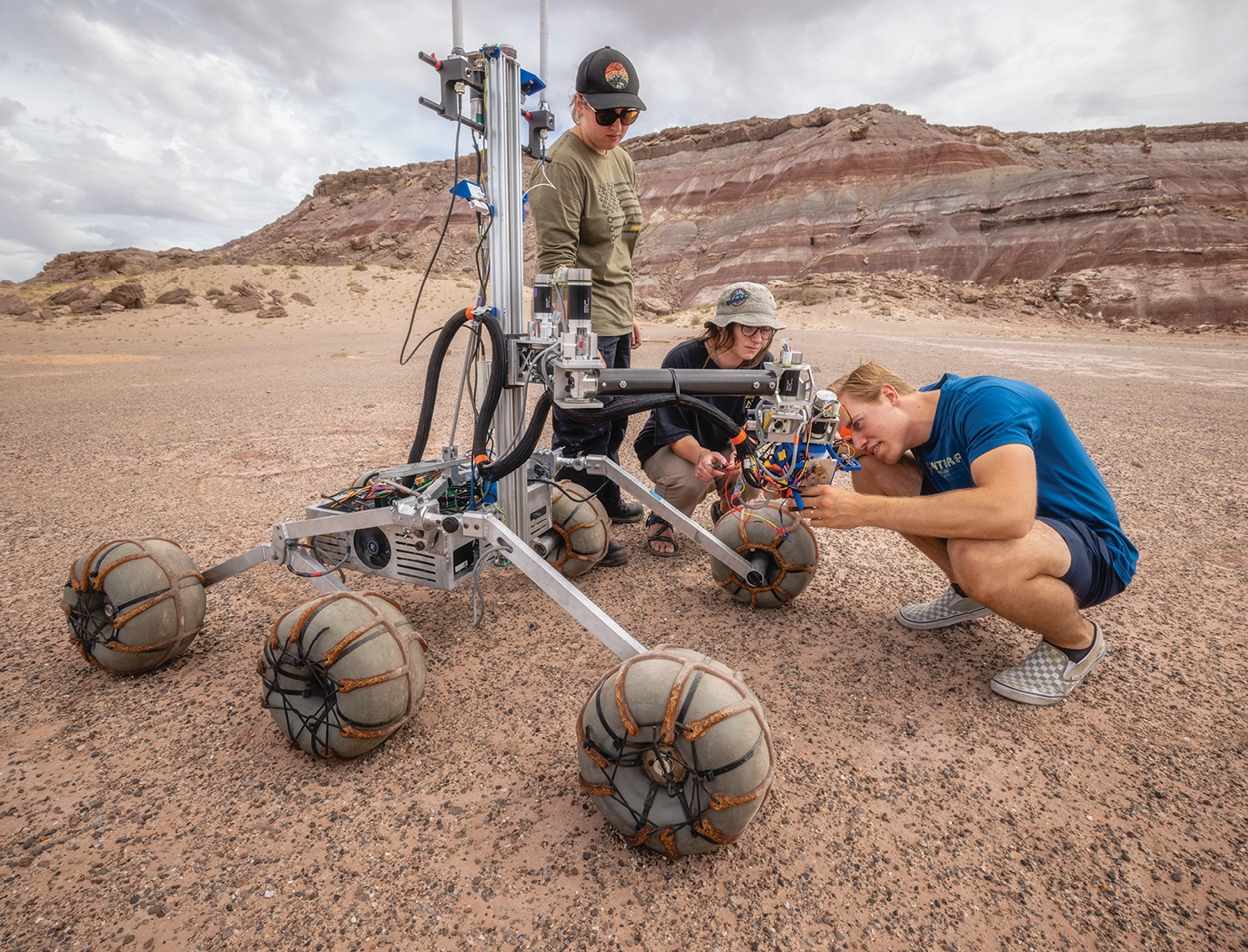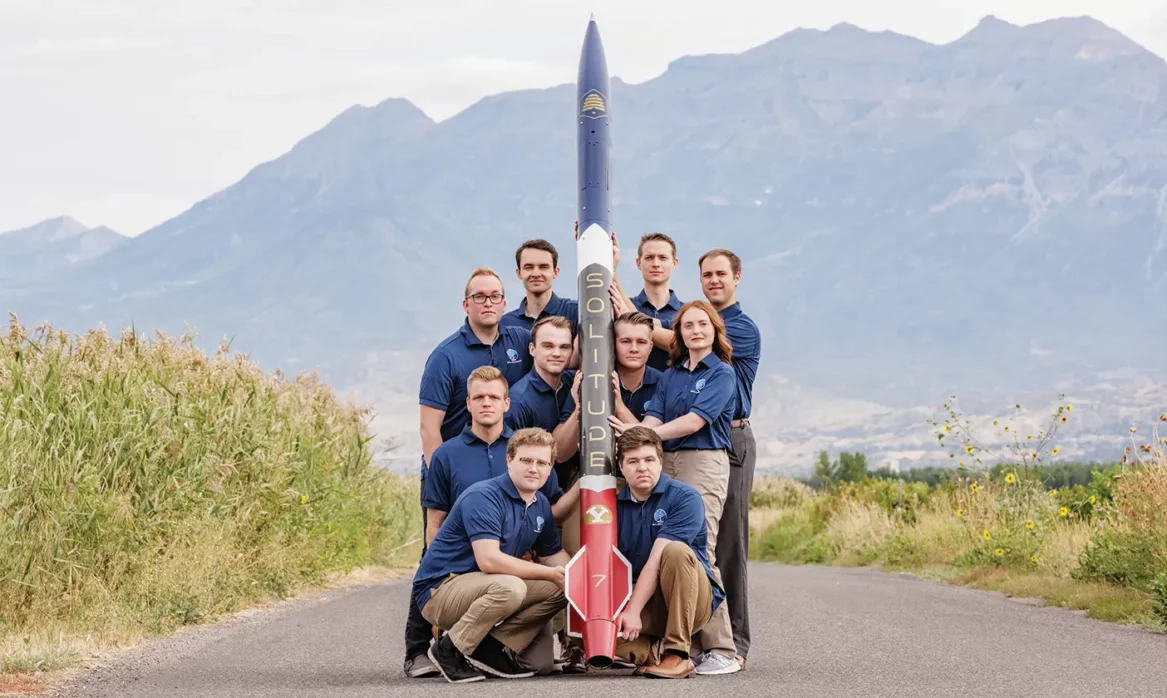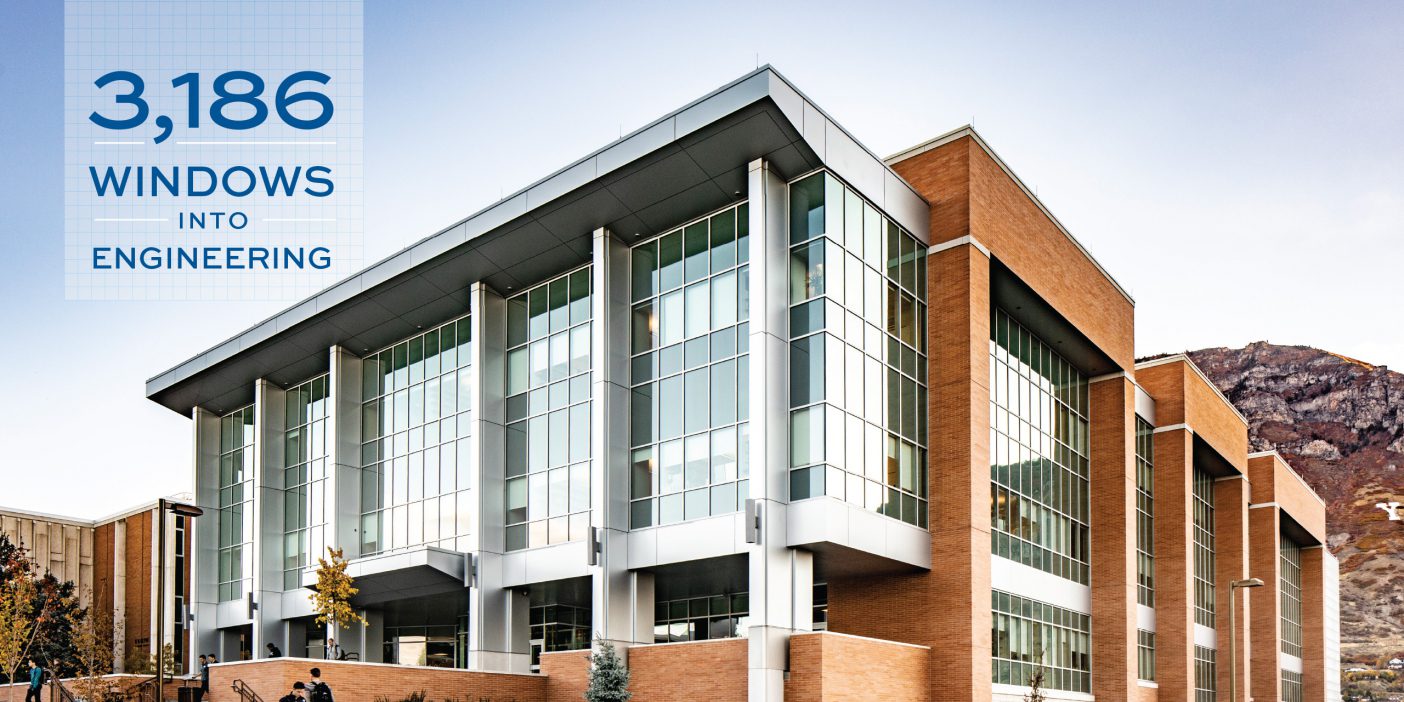
In a desert landscape reminiscent of Mars (or perhaps Tatooine), a nimble six-wheeled robot rolls over the rocky red terrain in search of a hidden water bottle.
For almost two decades, new and improved iterations of BYU-born rovers have made the annual pilgrimage to the Mars Desert Research Station, just outside of Hanksville, Utah, testing their mettle against bots designed at other universities.
The six-wheeled rover, which students control remotely from a base station, is designed to navigate big rocks and uneven terrain. Its multijointed arm can perform tasks such as opening drawers, adjusting valves, putting a soil cache into a container, and plugging in a USB stick.
Competing against 114 teams from 15 countries in the 2025 University Rover Challenge, the BYU Mars Rover team placed fourth overall and first in the autonomous navigation task.
“You only get one chance to do everything, and so there’s a lot of preparation that goes into testing to make sure that if something does go wrong, you have a backup solution,” says Braden J. Meyers (BS ’25), who was part of the autonomous navigation team.
Some of this testing included long days out in Hanksville with mechanical engineering Professor Marc D. Killpack (BS ’07), getting “the robot out of the lab into the field, where it’s actually doing something and doing it reliably,” says Meyers.
In competition the teams complete tasks to earn points. A month prior to the competition, the team came across some roadblocks in their preparations—the computer kept crashing, the GPS and camera were struggling to stay connected—and the students had to make some last-minute adjustments, including switching to a different computer. Their flexibility during these preparations allowed the BYU rover to find the hidden water bottle first at the competition, scoring them enough points to win the autonomous navigation task.
Killpack, who mentored students on the project, balanced providing guidance with leaving the final decisions in their hands. “He’s really good at giving advice and then stepping back and letting us learn,” says team lead and computer science student Hannah Spigarelli (’26). “Letting us make mistakes was so valuable.”
The team brought in students from computer science, electrical engineering, computer engineering, and manufacturing engineering. “This is one of the first times the students get exposure to a project that’s so large and complicated that you have to have people with expertise from different disciplines,” says Killpack.
“All of those different backgrounds taught me so much,” says Spigarelli. “The world is a better place when we work together.”












